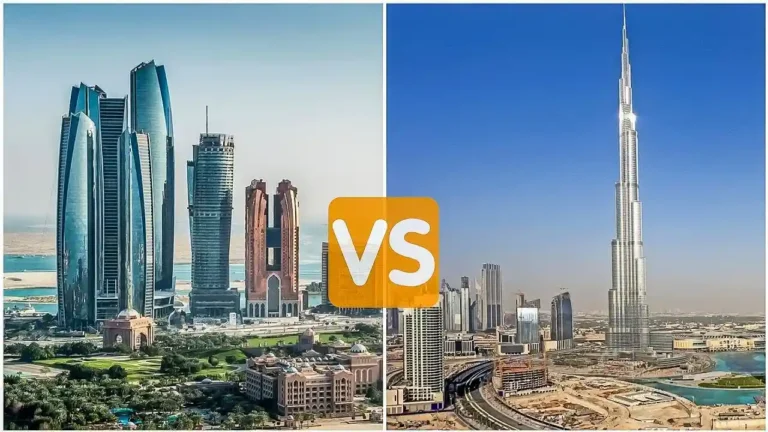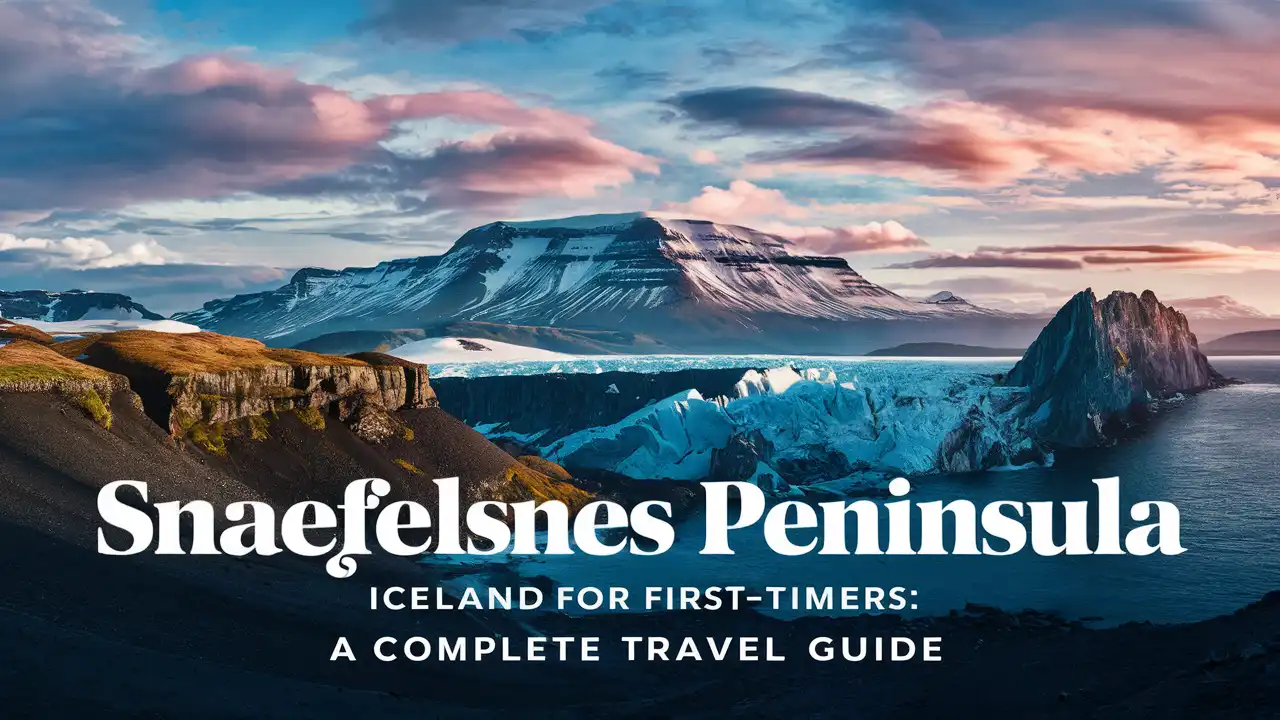
So, you’ve heard a bit about the Snaefellsnes Peninsula Iceland, huh? Maybe you’ve seen some photos with that iconic arrowhead-shaped mountain—yeah, that’s Kirkjufell—and those wild, dramatic coastlines that look like they belong in some fantasy novel.
Honestly, it’s one of those places that, once you’re there, you just get why it’s called “Iceland in Miniature.” You get a taste of so many Icelandic landscapes all packed into one spot.
Volcanic craters, black sand beaches, towering cliffs, glaciers, fishing villages, and those vast lava fields that look like the surface of another planet… It’s kind of overwhelming in the best way.
A Guide To Snaefellsnes Peninsula Iceland for First-Timers

If you’re a first-timer, the peninsula is almost perfect. It’s like the easier, quieter sibling to the busier Golden Circle or Ring Road routes. You won’t be swamped with crowds all the time (though, sure, during peak summer it gets busier).
The towns are charming but not overwhelmingly touristy, so you still get that authentic Icelandic vibe. Plus, if you’re into hiking, wildlife spotting, or just soaking up stunning views without feeling rushed, this place has it all.
But, okay, fair warning—while it’s friendly for newcomers, the weather can be… well, unpredictable. So don’t expect everything to go perfectly smooth. Iceland likes to keep you on your toes. Still, it’s absolutely worth the adventure.
1. Getting There
How to Reach Snaefellsnes from Reykjavik?
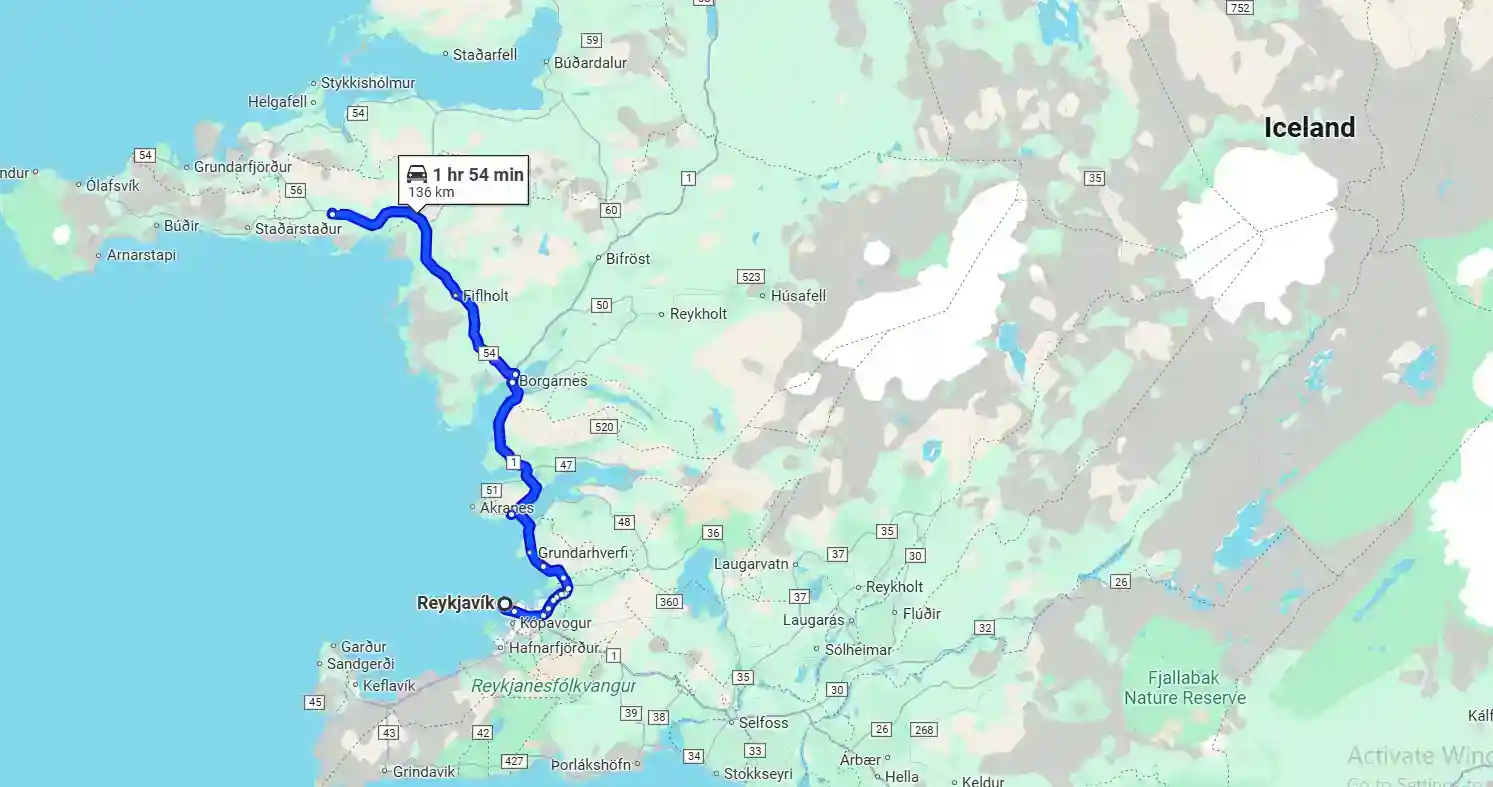
Directions: Reykjavik to Snaefellsnes
Getting to Snaefellsnes from Reykjavik isn’t too complicated, but your choice here really depends on how much freedom you want and what kind of vibe you’re after.
The peninsula sits about 2 to 3 hours northwest of Reykjavik if you’re driving, mostly along Route 1 and then Route 54, which cuts right through the heart of Snaefellsnes.
Public Transport vs. Renting a Car
Renting a car is by far the most flexible option—you get to stop whenever you want, check out little hidden spots, or linger at Djupalonssandur beach without racing against a bus schedule. Trust me, some of those black pebble beaches and lava fields deserve at least an hour or two of unhurried exploration.
If driving’s not your thing, there is public transport, but it’s… well, limited. Buses run from Reykjavik to some of the bigger towns like Stykkishólmur or Grundarfjörður, but services aren’t super frequent, especially outside summer. Plus, once you’re there, you might still need to hitch a local bus or taxi to get around the more scattered sights. It’s doable, but it takes more planning and patience.
Best Time of Year to Visit the Peninsula
As for timing your visit, summer (June to August) is the obvious favorite for many—long daylight hours, relatively mild weather, and all the trails are accessible. But if you ask me, visiting shoulder seasons like late spring or early fall has its own charm.
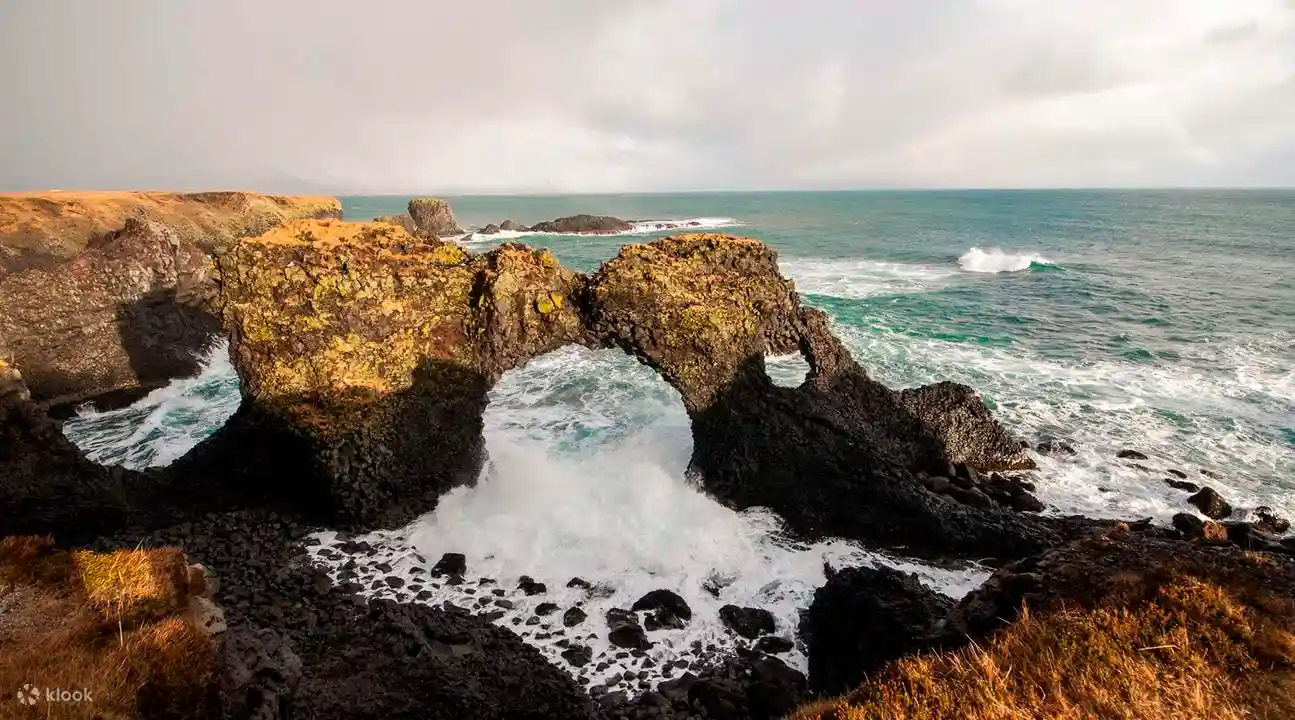
The crowds thin out, the light shifts beautifully for photography, and you might catch glimpses of the Northern Lights if you’re lucky.
Winter trips are trickier with shorter daylight and snowier roads, but for the adventurous, glacier hiking on Snæfellsjökull and the stark volcanic landscapes dusted in snow can be magical.
2. Planning Your Trip
How Many Days Should You Spend?
Alright, so how much time should you actually spend on the Snaefellsnes Peninsula? If you’re tight on time, a day trip from Reykjavik is doable.
You’ll have to be pretty strategic, maybe pick a few highlights like Kirkjufell Mountain and Djúpalónssandur beach, but honestly, it can feel a bit rushed. You might find yourself wishing for more time just to soak it all in without constantly watching the clock.
So, two or three days is ideal if you can swing it. That way, you can explore more at your own pace, enjoy some hikes, and even check out a fishing village or two without feeling like you’re just ticking boxes.
Where to Stay: Towns and Accommodation Options
Where to stay? Well, the peninsula has a few main towns and charming villages that are perfect bases. Grundarfjörður, the town near Kirkjufell, is popular and has several accommodation options—everything from cozy guesthouses to small hotels.
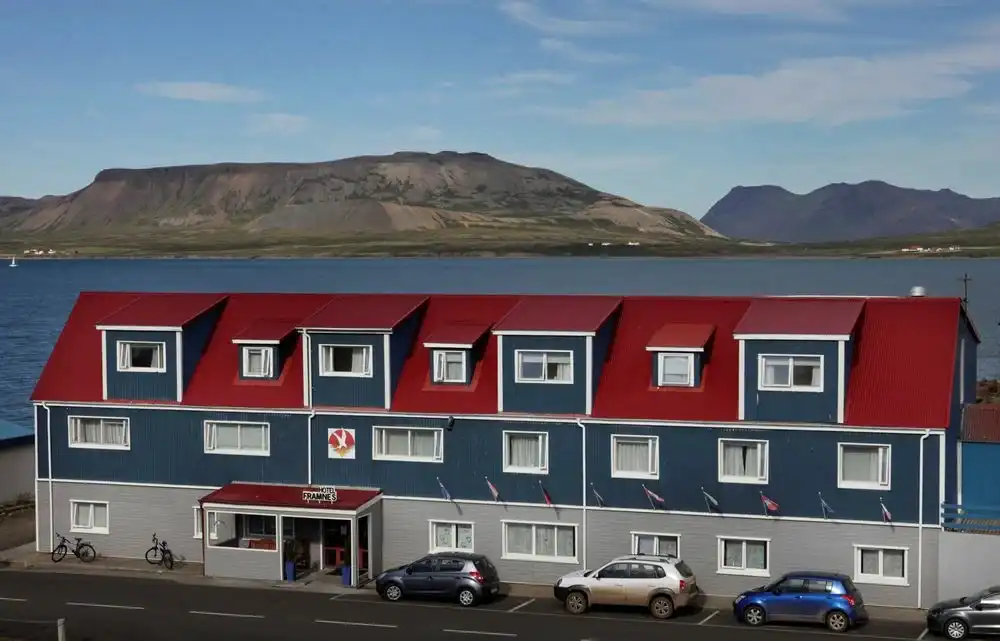
Stykkishólmur is the biggest town around, and it’s got that lovely fishing village feel with colorful houses lining the harbor. If you want something more low-key, Arnarstapi or Hellnar are smaller spots right near those stunning coastal cliffs and lava formations.
Expect a mix of guesthouses, B&Bs, and some unique stays—like cabins or farm stays if you want a bit of Icelandic countryside charm.
Budgeting Tips for First-Time Visitors
Budget-wise, Iceland’s not exactly a bargain basement destination, but you can manage costs if you plan ahead. Booking accommodation early helps, especially in summer.
Consider guesthouses or hostels instead of pricier hotels, and keep an eye out for places that offer kitchen facilities—you’ll save a lot by making some meals yourself.
Also, gas and food can add up, so having a rough budget for daily expenses keeps surprises to a minimum. And hey, sometimes splurging on a nice seafood dinner by the coast feels totally worth it.
4. Orientation to the Region
Geography and Layout of the Peninsula
Okay, a quick geography rundown so you don’t get lost. The Snaefellsnes Peninsula juts out from western Iceland, kind of like an arm reaching into the Atlantic.
It’s flanked by the northern and southern coasts, each with its own unique beauty. Route 54 is the main artery running through it, linking the towns and the key natural sights.
The landscape changes so much as you move from one spot to another—lava fields suddenly give way to black sand beaches, then cliffs lined with basalt columns, and finally those snow-capped mountains and glaciers you keep hearing about.
Key Towns and Villages to Know
Knowing a few key towns is helpful. Grundarfjörður is your go-to if you want to be near Kirkjufell and the fishing boats. Stykkishólmur, the biggest town, is a bit busier but still very laid-back and pretty.
Then you have smaller gems like Arnarstapi and Hellnar, where the cliffs and birdlife steal the show, and places like Olafsvik that feel more off-the-beaten-path.
Local Language, Culture, and Safety Tips
Language-wise, Icelanders speak Icelandic, obviously, but English is widely spoken, especially in tourist areas, so you won’t have to sweat communication too much.
People are super friendly and used to visitors, so don’t hesitate to ask locals for tips—they often share gems you won’t find in guidebooks.
Safety? Iceland is pretty chill in that department. Roads are generally well maintained, but be mindful of changing weather, especially if you’re driving on gravel or mountain roads. Stick to marked trails on hikes and respect the natural environment—it’s fragile, even if it looks rugged.
5. Iconic Natural Attractions
Snaefellsjökull National Park Overview
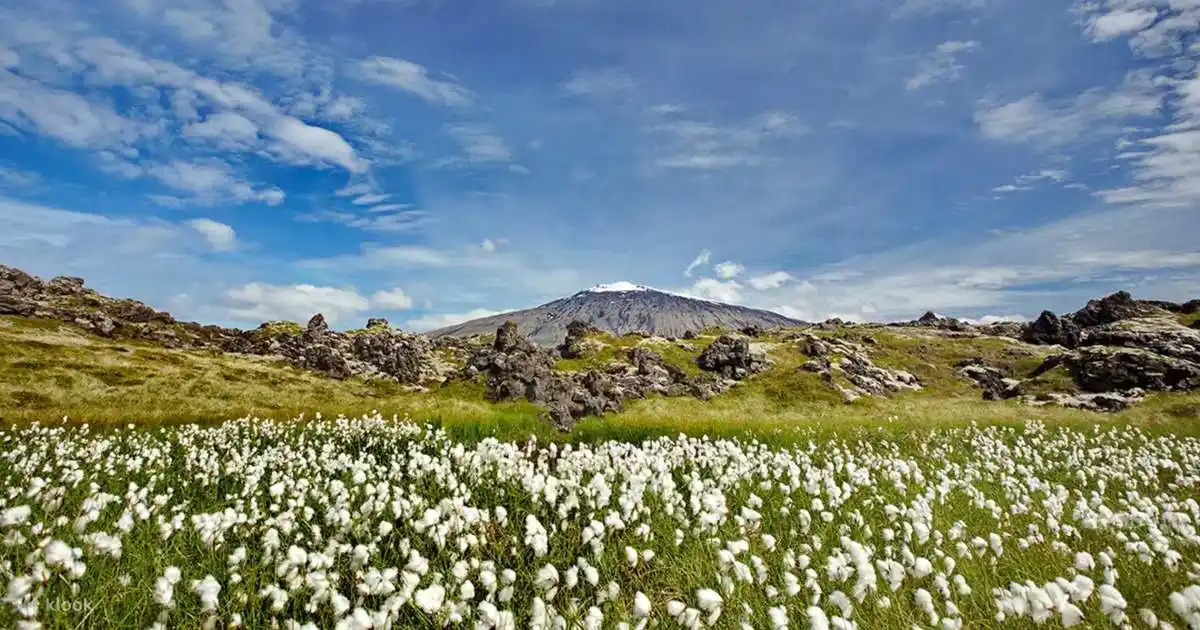
So, let’s talk about the real draw here — the jaw-dropping natural sights that make the Snaefellsnes Peninsula such a treasure. You can’t really do the peninsula justice without visiting Snæfellsjökull National Park.
It’s kind of the heart of the place, where you get a bit of everything: lava fields, volcanic craters, rugged coastline, and that famous glacier-capped volcano, Snæfellsjökull itself.
Honestly, it’s one of those spots that sort of sneaks up on you — you think you’re just driving along, then bam, this massive glacier and dormant volcano dominates the horizon.
It’s a bit eerie and awe-inspiring all at once, especially if you imagine Jules Verne’s “Journey to the Center of the Earth” taking place right beneath it.
Snaefellsjökull Glacier and Volcano
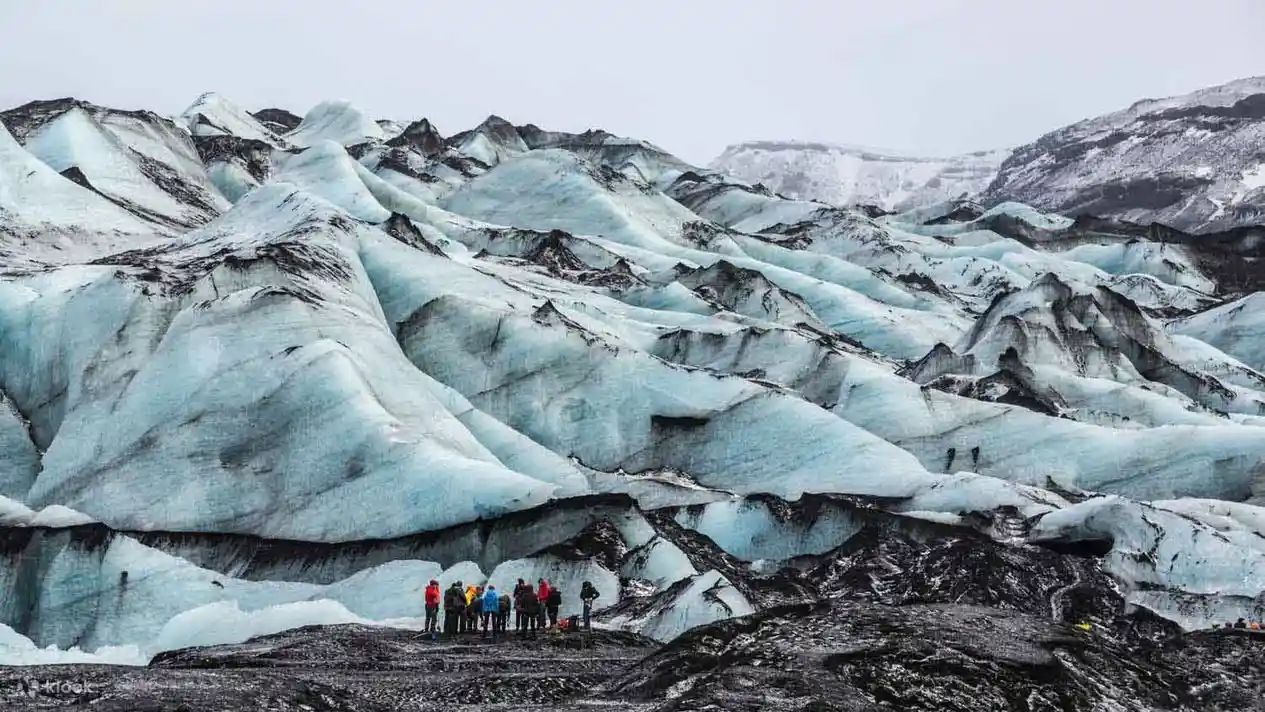
Speaking of the volcano, Snæfellsjökull Glacier isn’t just a pretty face. It’s actually a dormant volcano covered by a glacier, and it’s believed to have mystical powers in Icelandic folklore.
You can take glacier hikes here, but you’ll want a guide unless you know what you’re doing — the terrain can be tricky, and the weather changes fast.
Still, just seeing it from afar on a clear day is stunning enough — those crisp white peaks contrasting against the dark volcanic landscapes below.
Arnarstapi and Hellnar Coastal Cliffs
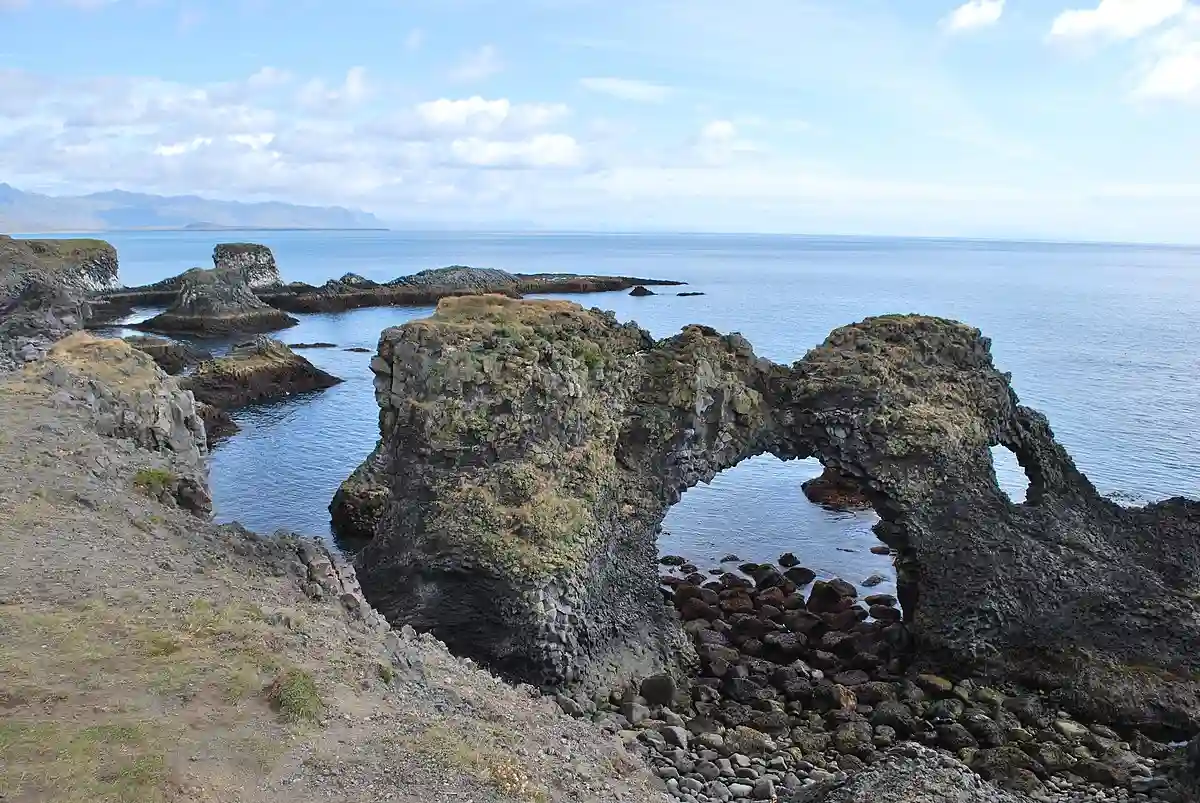
Then there’s Arnarstapi and Hellnar, two charming fishing villages that sit along the southern shore. They’re connected by a beautiful coastal hiking trail that’s easy enough for most folks but still offers plenty of dramatic scenery: basalt cliffs rising steeply from the sea, huge lava formations that look like sculptures, and an abundance of birdlife.
If you stop by Arnarstapi, make sure to check out the natural stone arches and those ghostly lava fields that stretch out nearby — it’s one of those places where you could just stand and watch the waves for hours.
Djúpalónssandur Black Sand Beach
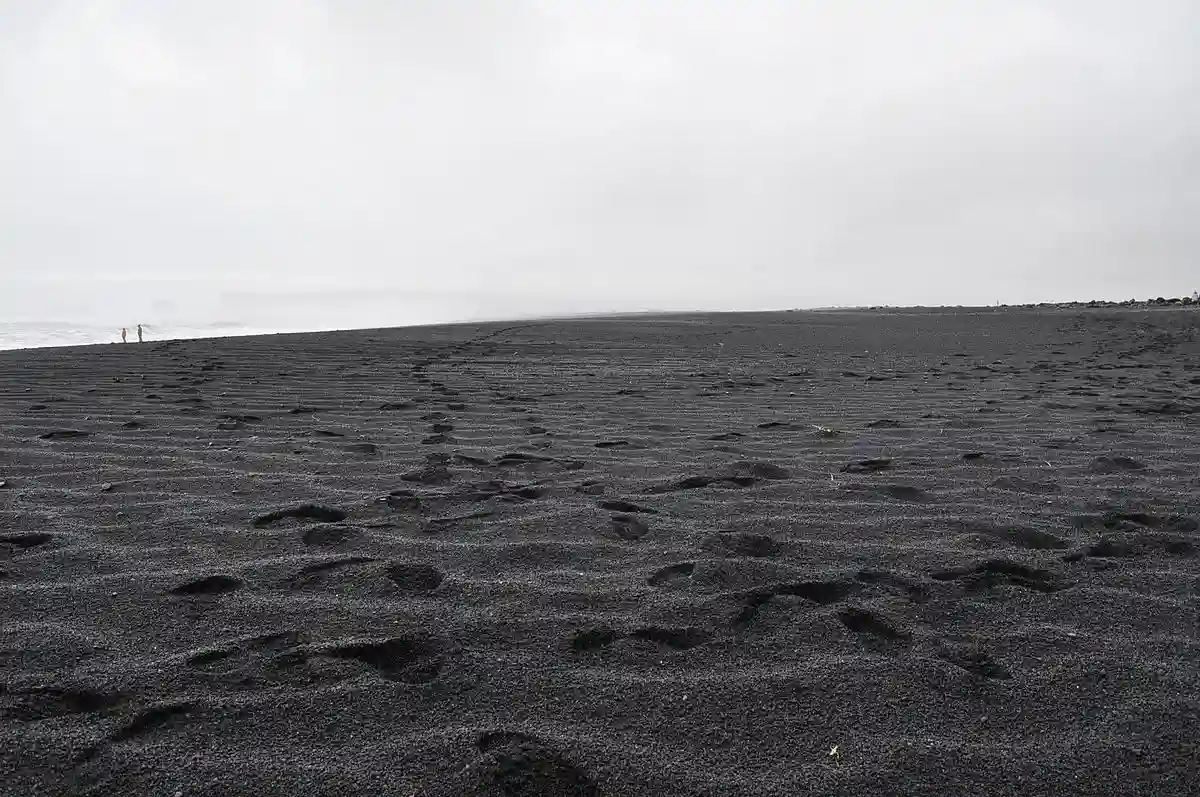
Not far from there, you’ll find Djúpalónssandur Black Sand Beach. Black sand beaches are kind of Iceland’s signature, but this one feels special.
The beach is scattered with rounded lava rocks that look almost otherworldly. There used to be a fishing village here, but now all that remains are rusted remnants of old boat wrecks and the skeletal remains of machinery — kind of haunting, honestly.
If you’re up for it, you can test your strength by lifting the four lifting stones on the beach, which were once used to judge the fitness of fishermen. A quirky little local tradition that makes you feel connected to the island’s history.
6. Water Wonders
If there’s one thing Iceland does well (besides lava), it’s water. And on the Snaefellsnes Peninsula, you’ll find waterfalls, gorges, beaches, and… well, water just doing its thing in the most beautiful ways.
Kirkjufellsfoss Waterfall and Mount Kirkjufell
Let’s start with Kirkjufell. Yeah, you’ve probably seen it in photos already — the Arrowhead-shaped mountain that’s basically become a celebrity thanks to Instagram and Game of Thrones.
But honestly, it lives up to the hype. Especially when paired with Kirkjufellsfoss, the little waterfall right in front of it. The mountain isn’t huge, but its symmetry (ironically, yeah) and the way it rises from the land make it unforgettable.
Go around golden hour if you can. The light hits it just right and, I don’t know, it just feels… still. Peaceful. Like time pauses for a bit.
Rauðfeldsgjá Gorge
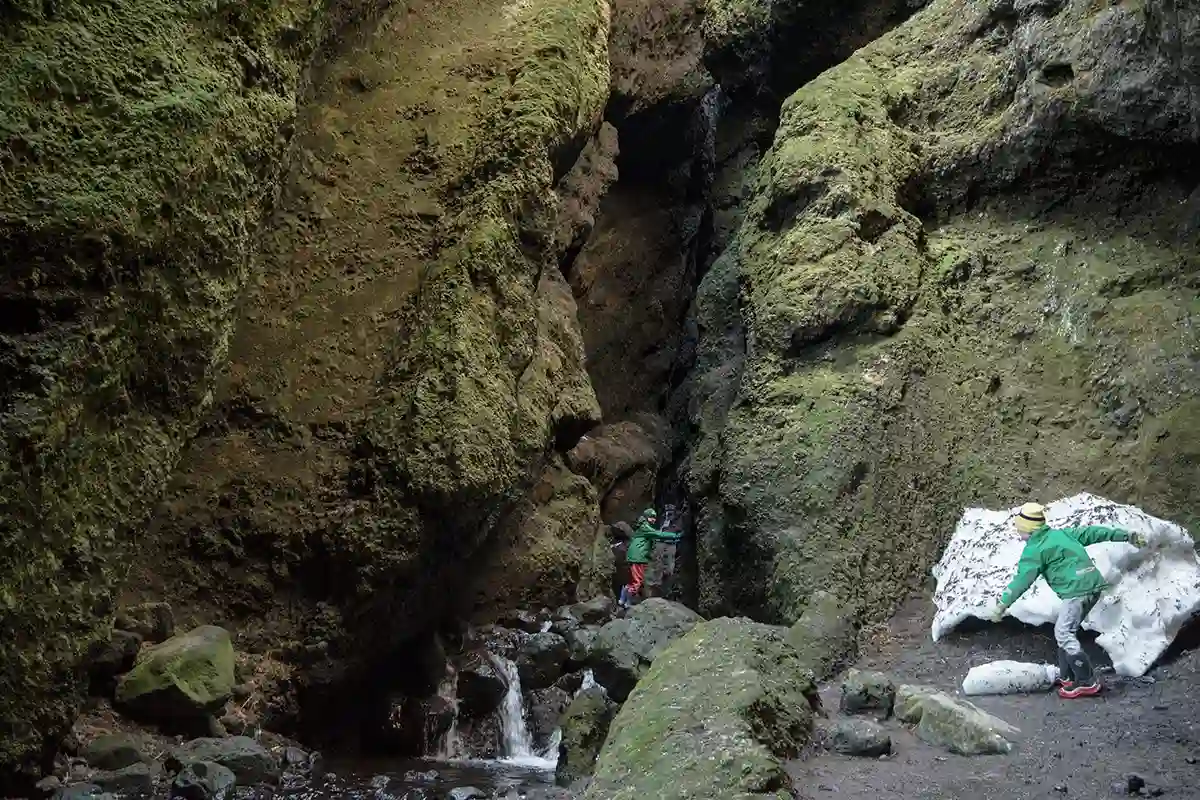
Now, if you’re craving something a bit more hidden, Rauðfeldsgjá Gorge is kind of a gem. It’s not flashy at first — you’ll see this narrow crack in a mountain and think, “Is that it?”
But then you step inside, and suddenly you’re in this cool, misty slot canyon with mossy walls and a trickling stream beneath your feet. Wear waterproof shoes.
Trust me. It’s a bit of a squeeze in parts, and slippery too, but if you’re up for a mini-adventure, it’s totally worth it. There’s something oddly magical about being in there. Kind of like stepping into a secret.
Ytri Tunga Beach and Seal Watching
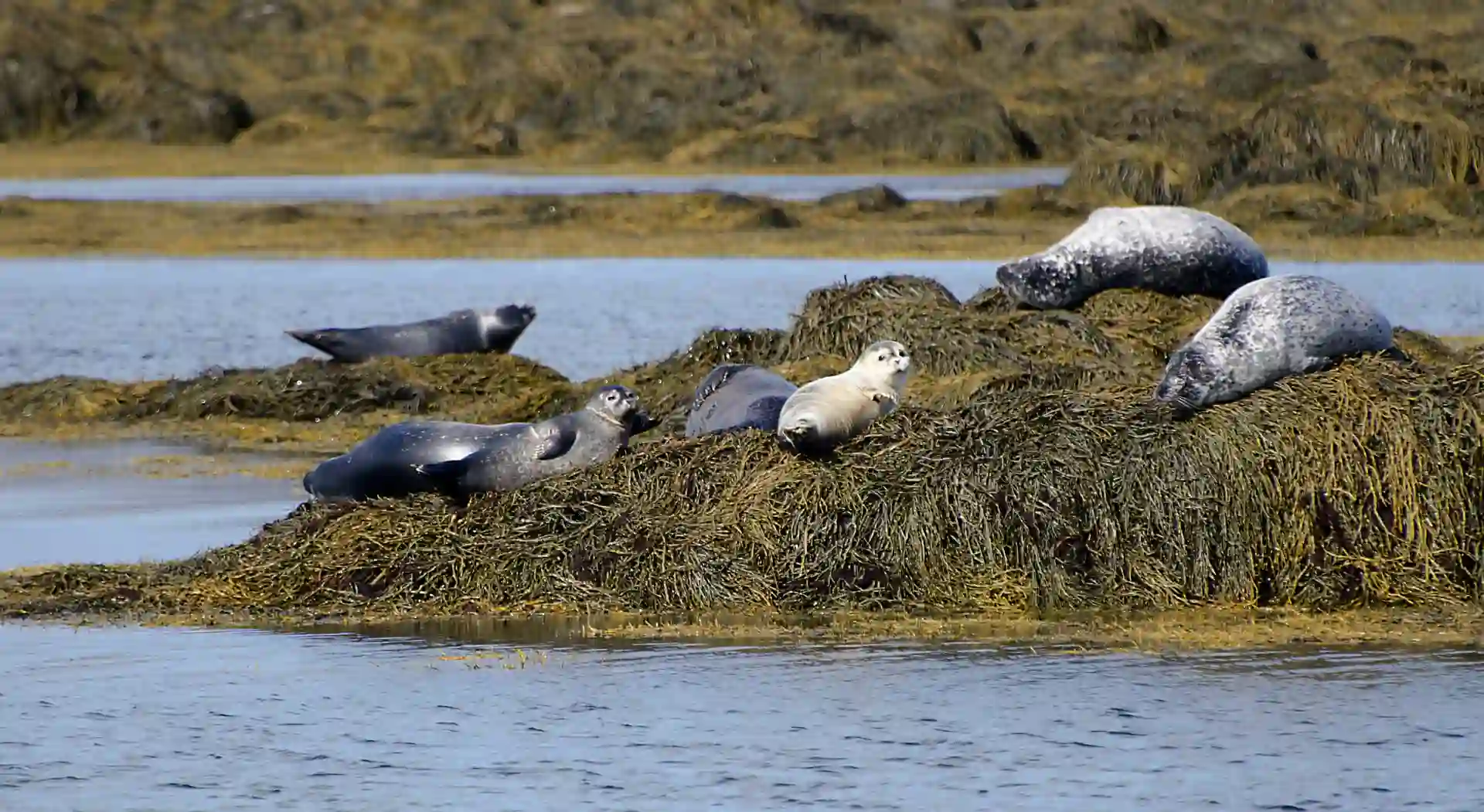
And then there’s Ytri Tunga Beach, which throws a bit of a curveball because it’s not black sand like most of Iceland’s beaches.
It’s golden — kind of a softer, gentler look. But the real highlight? Seals. Lazy, adorable seals, flopped across the rocks like they own the place (and honestly, they kind of do). It’s one of the more reliable spots for seal-watching, especially in summer.
Bring binoculars if you have them… or just your patience, because sometimes you have to wait a bit for them to pop up. It’s worth it when they do.
7. Adventure and Outdoor Activities
Alright, let’s say you’re not the type to just look at stuff — you want to do things. Snaefellsnes has that covered too. Whether you’re up for hiking, riding, caving, or cruising the coast, there’s a little something here for every kind of explorer.
Hiking Trails for Beginners and Adventurers
Hiking, first of all, is just part of the experience here. There are short, easy coastal paths like the one between Arnarstapi and Hellnar (mentioned earlier), but if you’re feeling more ambitious, there are routes that get you closer to the Snæfellsjökull Glacier or wind through those ghostly lava fields — the 4000-year-old Berserkjahraun lava field is a favorite.
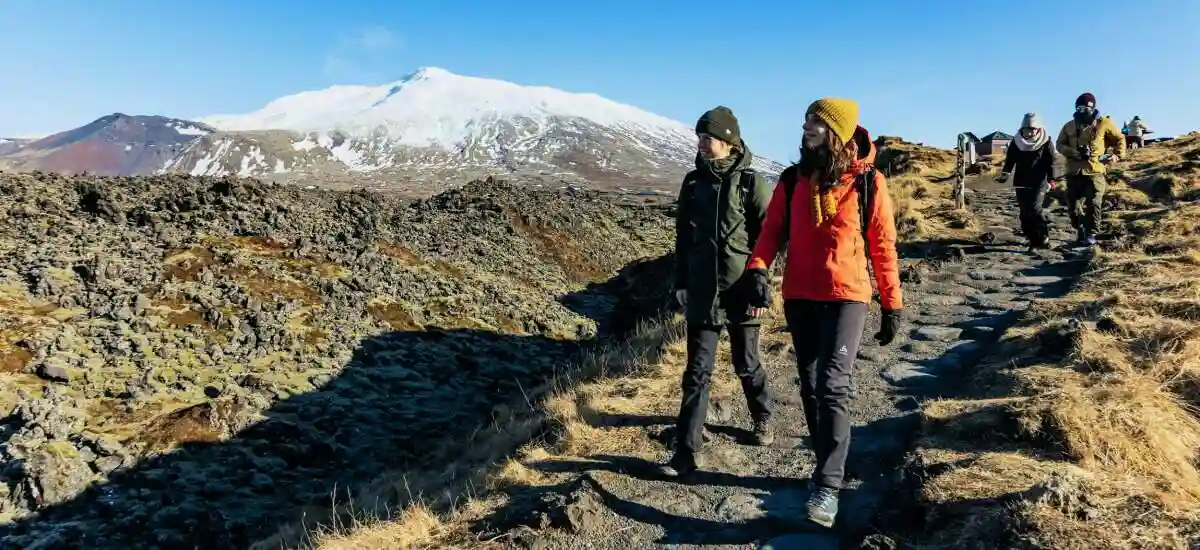
Some trails are steep, others are more like leisurely strolls, but all of them give you access to that dramatic Icelandic scenery you came for: vast lava fields, beautiful mountains, black lava cliffs, the occasional waterfall just… appearing out of nowhere.
Caving in Vatnshellir Lava Tube
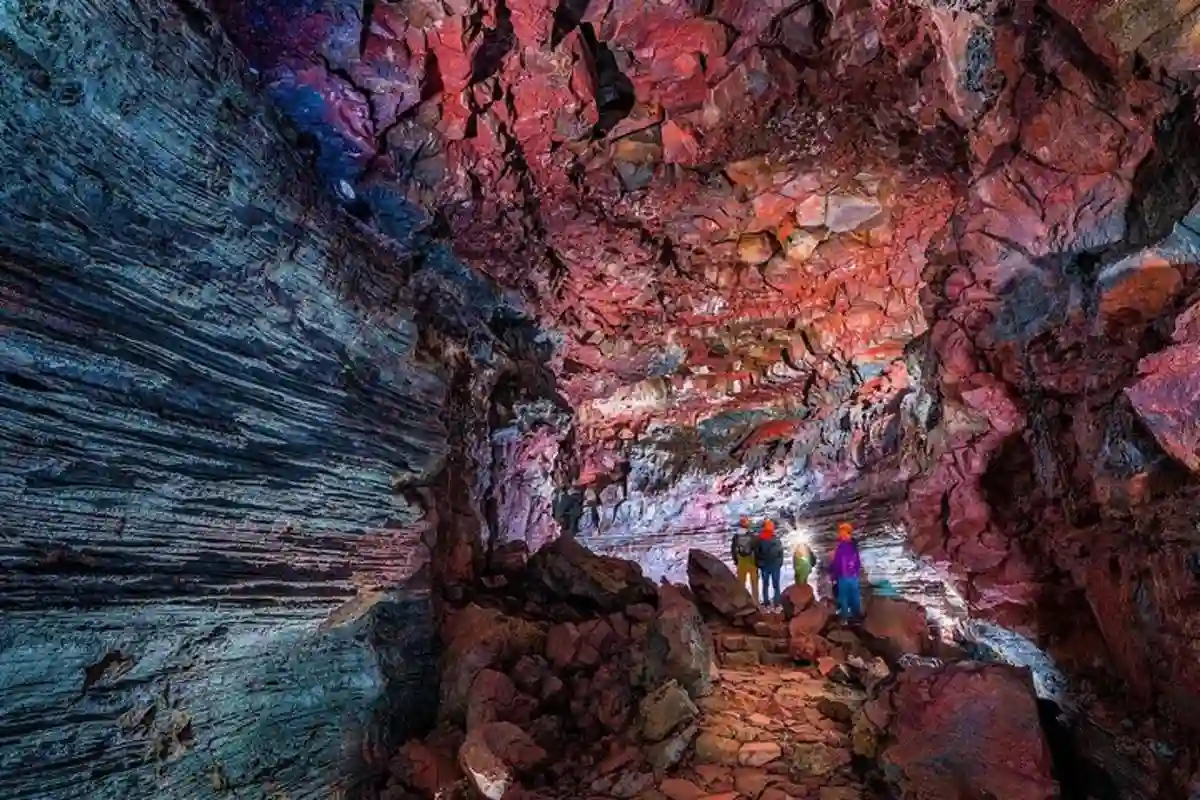
Then there’s Vatnshellir Cave, which is basically your invitation to head underground. It’s an 8,000-year-old lava tube and you descend with a guide down a spiral staircase into the darkness — sounds a little dramatic, right? But it’s not scary.
Just quiet and weirdly peaceful. The walls are all strange shapes, like they were carved by fire and frozen mid-movement. You might even spot moss-covered walls and tiny rock formations that look like little sculptures. It’s surreal.
Whale Watching and Sea Tours
If you’re more into the water side of things, consider a whale-watching tour or a sea adventure from towns like Ólafsvík or Stykkishólmur. Depending on the season, you might spot humpbacks, orcas, or even dolphins.
The tours often include other coastal sights, too — basalt cliffs, huge lava formations, and sometimes a visit to Flatey Island, a quiet little place with colorful houses and abundant bird life. It’s a whole different kind of peaceful.
Horseback Riding on Icelandic Horses
And last but not least… horseback riding. Icelandic horses are small, sturdy, and just ridiculously photogenic. Riding one across the barren lava fields or along the coast is kind of a dream.
Even if you’re not a horse person, it’s worth trying just for the experience. They have this special gait called the tölt — smooth and gentle — so it’s a lot more comfortable than you might expect.
8. Culture and History
Okay, so yes — Snaefellsnes is all about wild nature and stunning views, but there’s more to it if you slow down. Beneath all the lava and legends, there’s a deep current of history and folklore here that gives the place even more character.
The Saga Connection: Bárðar Saga Snæfellsáss
Let’s start with Bárðar Saga Snæfellsáss — a saga rooted in the region. The short version? It’s about Bárður, a half-man, half-troll protector of the peninsula. You’ll find a big stone statue of him in Arnarstapi.
Kind of haunting. Kind of powerful. Icelanders take their legends seriously, and this one still echoes through the land like… he’s still watching over it or something. It adds this mystical layer to everything. Like maybe the lava fields aren’t totally empty after all.
Local Legends and Folklore
You’ll also hear locals talk about hidden people — elves, mostly — especially around lava rocks or cliffs. Some people laugh it off, others… don’t.
Even road projects have been redirected because of “elf homes.” Whether you believe it or not, it’s part of the cultural fabric here, and it gives the landscape this slightly enchanted vibe. Like nature isn’t just nature… it’s alive in a different way.
Museums and Historical Sites
As for more grounded history, the peninsula is dotted with museums and historic sites. There’s the Shark Museum in Bjarnarhöfn — yes, that’s a thing — where you can learn about the traditional (and honestly kind of gross) process of fermenting Greenland shark. You can even taste it, if you’re brave.
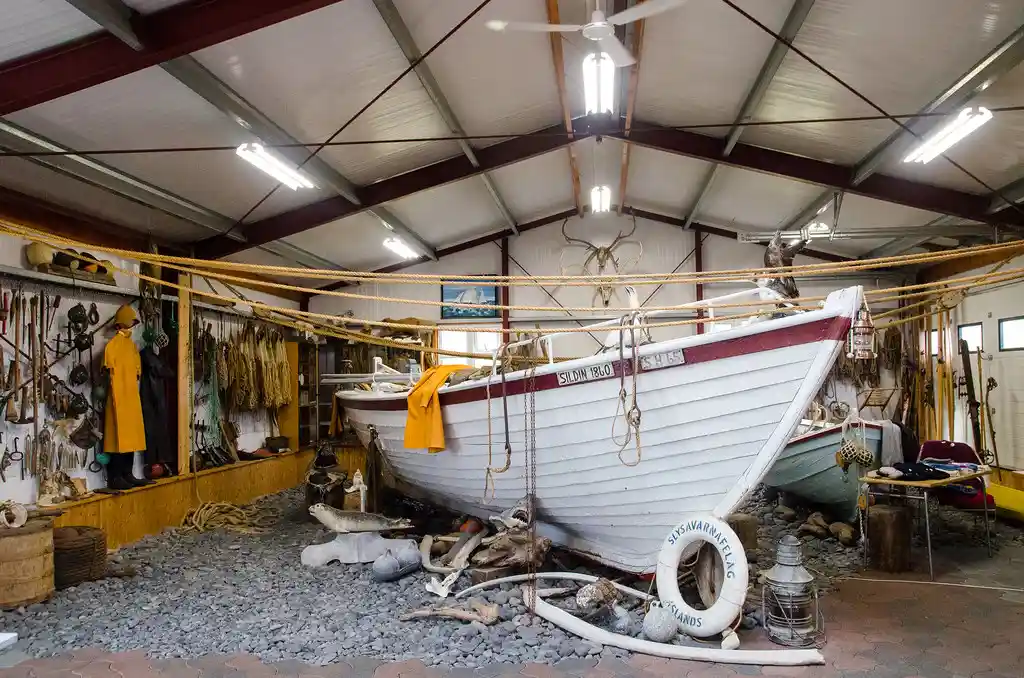
Then there’s the Maritime Museum in Hellissandur, giving you a glimpse into the fishing life that’s defined these coastal towns for centuries.
It’s not just stories and museums either — it’s in the little details. Like old wooden churches, colorful fishing boats bobbing in the harbors, or the quiet pride people seem to have about their heritage. You can feel it in the air… or maybe in the silence. Iceland’s like that.
9. Food and Dining
So here’s the deal. You probably didn’t come to the Snaefellsnes Peninsula for a foodie tour… but you might leave surprised. It’s not flashy — there aren’t gourmet restaurants hiding behind every lava rock — but there’s this honest, hearty, deeply Icelandic thing going on with the food here that sort of sneaks up on you.
What to Eat: Traditional Icelandic Dishes
Start with the basics: fish. Naturally. Most of it comes straight from the surrounding waters, and whether it’s pan-fried cod or buttery langoustine, you can kind of taste the cold sea and clean air in every bite.
A lot of places serve it simply, with potatoes and maybe a dollop of skyr-based sauce or something green. Nothing overcomplicated. Just… good.
Best Restaurants and Cafés on the Peninsula
In Stykkishólmur (the biggest town in the region), you’ve got a few cozy spots where the soup is hot, the bread is thick, and the vibe is super laid-back.
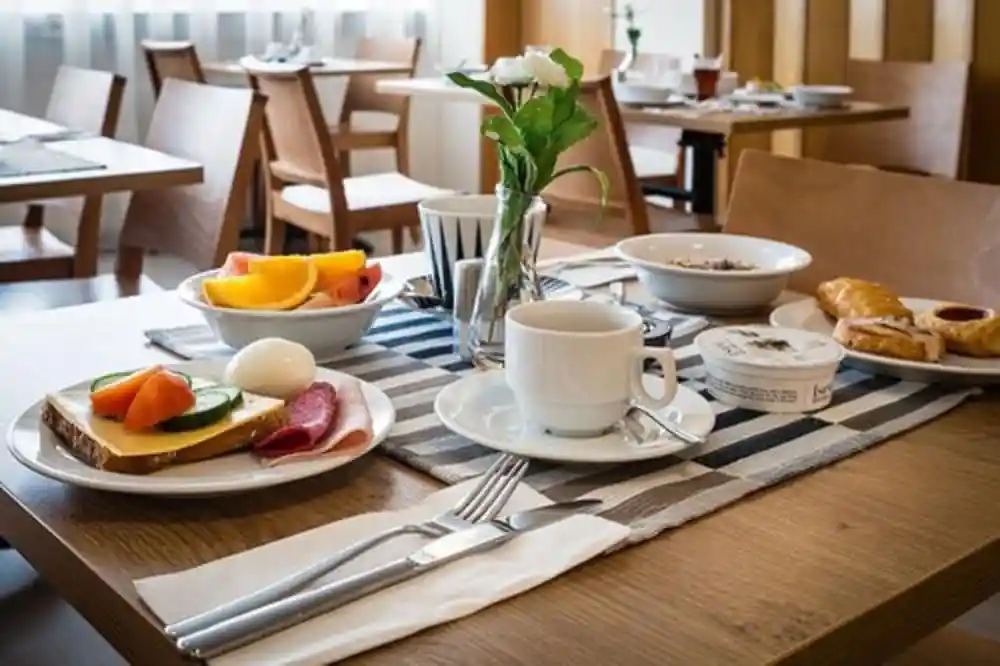
Narfeyrarstofa is one of those places where you settle in, forget about your plans for a bit, and just enjoy being warm while the weather does whatever it wants outside.
I had a fish soup there once — creamy, with just a bit of spice — and it sort of felt like a hug in a bowl. Might sound silly, but it stuck with me.
Further west, there’s Viðvík Restaurant near Hellissandur, which is tiny but somehow stylish in that quiet Icelandic way — minimalist, but with soul. And if you’re around Arnarstapi, don’t skip Snjófell Restaurant.
The seafood here is legit, and they’ve got that perfect ocean-meets-mountain view. Not that you need another reason to linger.
Unique Local Food Experiences
Oh — and let’s talk about Icelandic hot dogs for a second. You’ll find them at gas stations or small diners, and they’re weirdly delicious.
Something about the lamb meat and all those toppings (raw onion, crispy onion, mustard, remoulade… just go with it). It’s not fancy, but it’s a rite of passage.
For those feeling adventurous, there’s fermented shark at the Shark Museum. Not exactly a dining experience, but more of a dare you whisper to yourself. It’s chewy, strong-smelling, and… well, not for everyone. I wouldn’t say I liked it. But I’m weirdly glad I tried it.
10. Photography and Scenic Spots
This part’s almost unfair. You could point your camera in pretty much any direction on the Snaefellsnes Peninsula and end up with something postcard-worthy. The light shifts constantly, the weather adds drama, and the land is so raw it barely looks real.
Best Sunrise and Sunset Locations
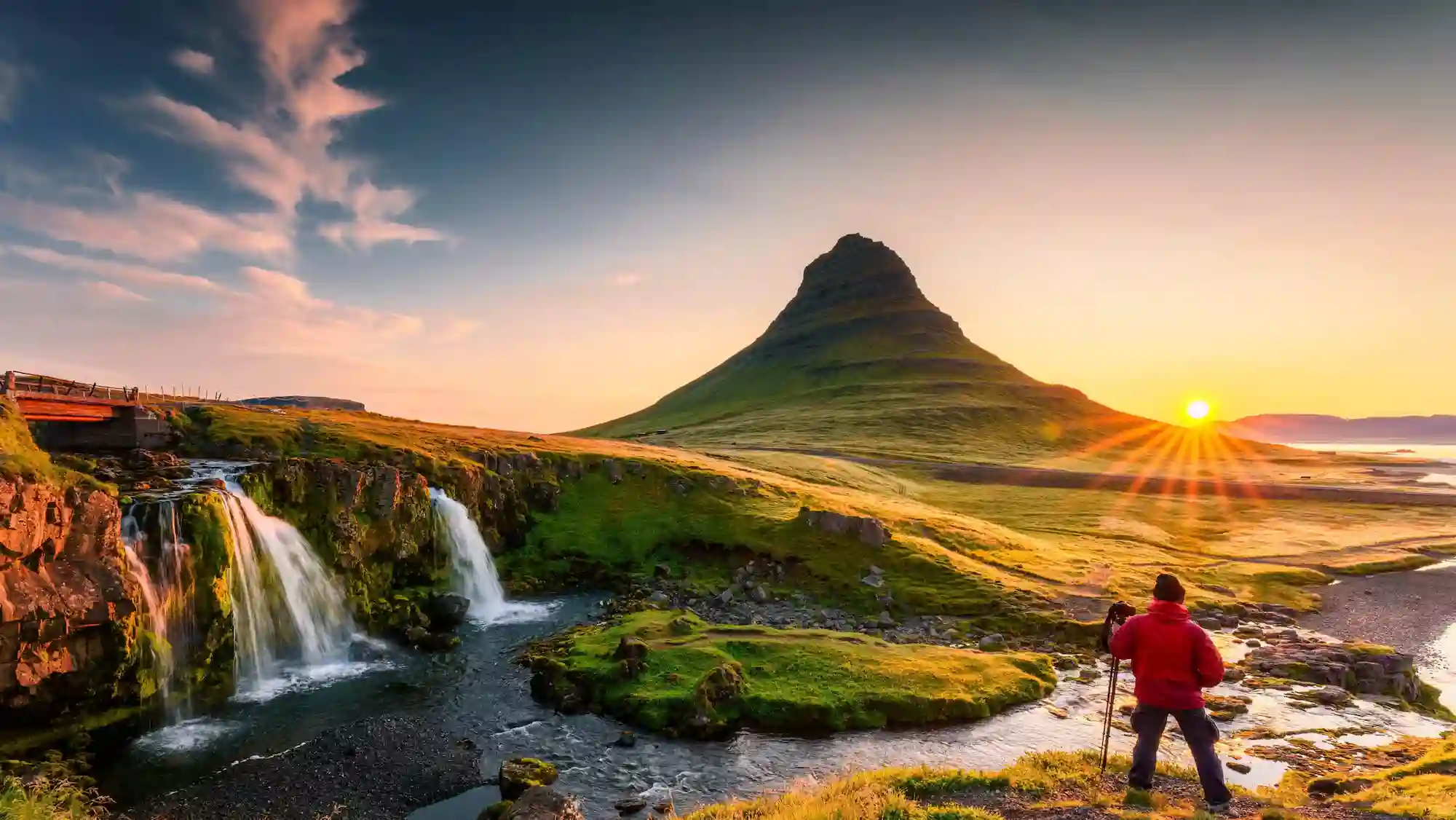
Let’s start with the obvious: Kirkjufell. We already talked about it, but seriously — if you’re into photography, go twice. Once in the day, once around sunset. Maybe again at night if the Northern Lights show up. It’s that kind of place.
Djupalonssandur Beach is another wild spot. The black pebble beach, rusted remains of a shipwreck, and these weirdly sculpted lava rocks — it’s like a scene from a forgotten epic. The beach is dramatic and kind of moody, especially on cloudy days when everything turns that silvery gray.
Then there’s Arnarstapi. The basalt cliffs here are just… mesmerizing. If you’ve never seen basalt columns up close, this is your chance. They rise and twist in this sort of accidental architecture — like nature decided to build something but got distracted halfway. Add in the waves crashing below and a few seabirds circling, and you’ve got the perfect slow-motion moment.
Now, sunrises and sunsets here? Wildly underrated. Most people rush around trying to tick off every stop, but if you just slow down, maybe park by a quiet cliff or a calm beach… you’ll see it. The way the sky blends from pink to gold to this weird lavender-blue. It’s soft, but somehow intense too.
Drone Photography Tips (Rules and Regulations)
For drone users — Iceland has strict rules, so check the local regulations before flying. Some areas are no-drone zones, especially around wildlife or protected land. But where it’s allowed, the aerial views of lava fields, glacier caps, and winding coastal roads are unreal.
Hidden Gems Off the Beaten Path
If you’re into hidden gems, there are lots of little unmarked paths that lead to stunning ocean views or forgotten lava formations. Ask locals. Or just wander a bit. The peninsula rewards curiosity.
11. Weather and Packing Tips
Seasonal Weather Overview
Alright, let’s be honest about the weather here. The Snaefellsnes Peninsula doesn’t really care what season it is — it’s going to do its own thing.
It can be sunny and still, and then ten minutes later you’re getting smacked in the face with sideways rain. Sometimes the wind howls so loud it feels like it’s coming from inside your jacket. It’s… part of the charm?
Seasonal breakdown? Well:
- Summer (June to August) is when most people visit. You’ll get long daylight hours (sometimes it barely gets dark), and it’s generally mild. Think 10°C to 15°C (50°F to 59°F). It’s also the best for spotting puffins, whales, and, let’s be real, road visibility.
- Spring and fall are quieter and moodier. The weather swings wildly. One minute the clouds are glowing, the next you’re trying to dry your gloves on your car’s heater vents. Pack layers, and don’t expect predictability.
- Winter? It’s beautiful — snowy lava fields, quiet roads, northern lights. But conditions can be tough. Roads may close, and daylight is short (sometimes just 4-5 hours). Worth it if you’re okay slowing down and dealing with the cold. Just don’t expect to cover the whole peninsula in one go.
What to Pack: Essentials for Each Season
What to pack? Even in summer, bring a windproof and waterproof jacket. Layers are your friend — thermal base layer, fleece, rain shell. You might never take off your beanie. Also… gloves. Dry socks. Backup dry socks.

Dressing in Layers Like a Local
Don’t overthink the fashion side of it. You’ll mostly be around rocks, sheep, and dramatic skies — no one cares what your pants look like as long as you stay warm.
Footwear? Go waterproof. The trails can be muddy or icy or randomly wet from misty waterfalls. Sneakers with holes won’t cut it. Hiking boots, even for light walks, make a big difference.
And don’t forget a swimsuit. Sounds weird, but there are hot springs and natural pools — and you’ll definitely regret not packing it when you find one unexpectedly
12. Sustainable Travel Tips
Okay, this part matters more than it sounds. Iceland — especially places like the Snaefellsnes Peninsula — is breathtakingly untouched. That’s kind of the whole point of coming here, right? So keeping it that way… matters.
A few things to keep in mind:
- Stick to marked paths. This isn’t just about staying safe. The moss-covered lava fields are delicate and can take decades to recover if trampled. Even one wrong step off-trail can leave a mark that doesn’t heal for years.
- Pack in, pack out. Always. Even if there’s no bin around, take your trash with you. That includes food scraps. Yes, even biodegradable stuff — it messes with local wildlife.
- Use refillable water bottles. The water here is insanely clean — you can fill up just about anywhere, including random taps and streams. No need to buy plastic bottles at every gas station.
- Respect the towns. The peninsula isn’t just a scenic loop — people actually live here. Drive slowly through villages. Don’t walk through someone’s backyard for a shortcut to a view. Smile. Say hello.
- Support local. Eat at the small café. Book the family-run tour. Buy a hand-knit wool hat from someone who actually knit it. It helps keep these communities thriving.
- And if you’re lucky enough to see wildlife — seals, birds, maybe even a whale offshore — admire them from a distance. Getting too close stresses them out. Same goes for drone use. Be respectful.
Travel here feels different. It’s slower. Quieter. You start to notice more when you’re not chasing the next big thing… and part of that means treading lightly, too.
13. Itineraries for First-Time Visitors
Okay, real talk — people try to cram way too much into a single day here. The peninsula looks small on a map, but the roads are winding, the scenery demands stops, and honestly… you don’t want to rush it. That said, here are some solid itinerary options depending on how much time you’ve got.
1-Day Road Trip Itinerary (Ambitious but doable)
If you’re just doing a day trip from Reykjavik, you’ll want an early start. Like, really early.
- Drive via Route 1 then Route 54. Hit Ytri Tunga Beach first (morning light is perfect for seals).
- Cruise past the Berserkjahraun lava field — take a short hike or photo stop.
- Stop at Stykkishólmur for lunch and a quick walk around the harbor.
- Continue to Kirkjufell and Kirkjufellsfoss. Take your time. It’s popular for a reason.
- Loop down to Djupalonssandur Beach for the lava rocks and black sand.
- If you’ve still got energy (and light), do a quick visit to Arnarstapi cliffs before heading back.
It’s a full day, no doubt. But manageable with good weather and stamina.
2-Day Explorer’s Route
This is the sweet spot for most travelers.
Day 1:
- Start with Berserkjahraun, then Stykkishólmur.
- Visit the Shark Museum (if you’re into weird Icelandic traditions).
- Afternoon around Kirkjufell and Ólafsvík.
- Overnight near Hellissandur or Arnarstapi.
Day 2:
- Explore Snæfellsjökull National Park.
- Hike near Arnarstapi and Hellnar.
- Visit Vatnshellir Cave (book in advance).
- Sunset at Djupalonssandur or the nearby cliffs.
3-Day Immersive Experience
Now you’re talking. This gives you time to really breathe it all in.
- Include everything from the 2-day route.
- Add slow mornings by the sea, hot coffee in a quiet café, random side roads to nowhere.
- Take a boat to Flatey Island or join a whale watching tour out of Ólafsvík.
- Maybe even go glacier hiking or horseback riding.
- Sleep in different towns to get a feel for the whole peninsula.
Three days here feels like a deep exhale.
14. Travel Logistics
Okay, here’s the not-so-glamorous part of travel that kind of makes or breaks the trip. Let’s get into the real-life stuff you’ll be glad you figured out before you’re halfway around the peninsula with no signal and a flashing fuel light.
Gas Stations and Driving Tips
There are gas stations in most towns, but not a ton of them. So… don’t push your luck. Stykkishólmur, Grundarfjörður, Ólafsvík, and Hellissandur usually have fuel, but there can be long stretches in between.
Some stations are unmanned and require a card with a PIN. Not all international cards work. Bring a backup or ask your bank about this before you go.
And the roads? Mostly paved, sometimes narrow, often scenic. Route 54 is your main artery here, and it’s fine for standard vehicles in good weather. Some smaller roads (like ones leading deeper into Snæfellsjökull National Park) might be gravel or a little rough, but they’re usually manageable. F-roads (mountain roads) are a different story — you’ll need a 4×4 and they’re only open in summer.
Mobile Connectivity and Internet Access
Most of the peninsula has decent mobile coverage, especially around towns. Still, don’t rely on a constant signal if you’re using online maps. Download offline maps on Google Maps or Maps.me before setting out.
Wi-Fi is common in guesthouses, cafés, and even some gas stations. It’s not blazing fast, but good enough to upload your Kirkjufell photos and check tomorrow’s weather forecast (which will probably say: “unpredictable”).
Currency, ATMs, and Card Usage
Iceland uses Icelandic Króna (ISK). Cash isn’t totally necessary — you can pay for almost everything with a card, even bathrooms in the middle of nowhere. That said, having a little cash might be useful for smaller towns or local markets.
ATMs are available in the larger towns, but again… don’t count on finding one every few miles. Plan ahead.
15. What Not to Miss
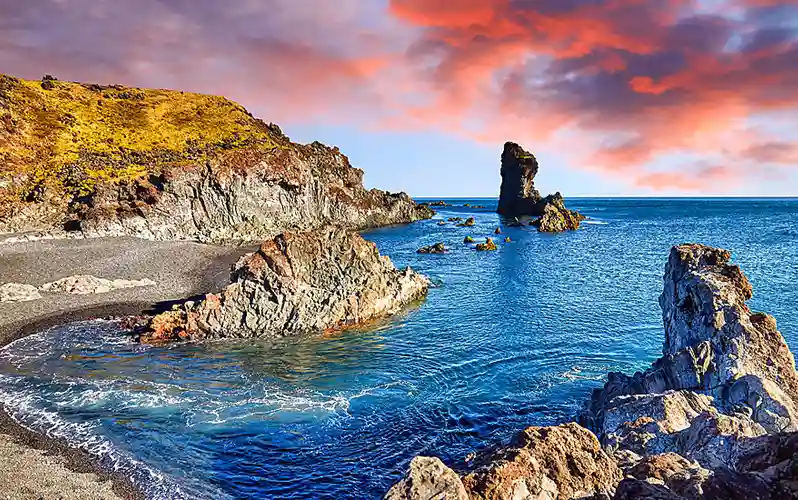
You’ll hear different favorites from everyone, but here are some moments and places that tend to stick with first-timers. Some big, some small. Some just… unexpectedly special.
- Kirkjufell and Kirkjufellsfoss — Yes, it’s popular. Yes, you’ve seen it on Instagram. Still somehow hits different when you’re actually standing there.
- Djupalonssandur Beach — Black sand, ghostly shipwreck remnants, and those strange rounded lava rocks that feel like they’ve been there forever. Kind of eerie. Kind of beautiful.
- Arnarstapi’s coastal cliffs — Even if you’re not big into geology, those basalt columns and sea arches feel otherworldly.
- Vatnshellir Cave — Walking down into an 8,000-year-old lava tube with only a helmet light is strangely humbling. Feels like being inside the earth’s memory or something.
- Berserkjahraun Lava Field — This spot doesn’t get much hype, but the textures, colors, and stillness here… it’s wild. Like standing on another planet, but with moss.
- Sunset anywhere along the southern coast — Pick a pull-off spot, wrap up in a blanket, and just watch. The way the light hits the sea and lava cliffs? Unreal.
And honestly… don’t rush the little villages. Talk to locals, visit a museum that seems kind of odd, eat fish soup even if you weren’t planning to. That’s where the real magic hides.
16. Common First-Timer Mistakes
No judgment here. Everyone fumbles a bit their first time — you learn as you go. But if we can help you avoid a few of the classic errors, that’s a win.
- Underestimating travel time
What looks like a 3-hour loop can turn into 6 with stops, wind, and photo detours. The roads aren’t built for speed — and you won’t want to rush anyway. - Ignoring the weather forecast
Even if it’s sunny in Reykjavik, the peninsula might be socked in with fog and gusts. Always check the Vedur app or local forecasts — then plan backup stops just in case. - Not bringing snacks or water
Food options are kind of spread out. If you skip lunch thinking you’ll just “grab something later,” you might end up hangry in the middle of a lava field. - Relying only on public transport
It’s possible, but not ideal. Buses are limited and don’t hit all the scenic stops. Renting a car (even for a day or two) gives you way more freedom. - Skipping local insights
Guidebooks are great, but locals know the real stories. Like why there’s a boulder named after a berserker, or what time the seals usually come out at Ytri Tunga. Ask questions.
17. Suggested Gear and Apps
Here’s where packing smart can really make your trip smoother — and more comfortable.
Navigation and Weather Apps
- Google Maps (download offline version of the area)
- Maps.me (super handy for hiking trails)
- Vedur.is (Iceland’s official weather app — reliable)
- SafeTravel.is (road and safety alerts)
Camera Gear
- A wide-angle lens helps capture those sweeping landscapes
- Tripod (especially if you’re into northern lights or waterfall shots)
- Extra memory cards (you’ll fill them up faster than you think)
- A microfiber cloth — weather shifts fast, and lens fog is real
Clothing and Footwear
- Waterproof outer layer
- Merino wool or thermal base layers
- Gloves, hat, neck gaiter
- Waterproof hiking boots
- Daypack for water, snacks, and layers
- Reusable water bottle (you can drink tap water anywhere!)
18. Day Trip vs. Overnight Stay
This comes up a lot. And… it really depends on your style and how much time you’ve got.
Day Trip Pros:
- Easy to do from Reykjavik in summer
- No need to book accommodation
- Can hit the major highlights if you plan tightly
Cons:
- Feels rushed. Really rushed.
- You’ll miss the slower moments (sunset, quiet mornings, random stops)
- If the weather turns, you’re stuck with a tight schedule
Staying Overnight Pros:
- Way more relaxed pace
- Opportunity to explore lesser-known places
- Better light for photography (sunset and sunrise)
- Can adjust plans if the weather shifts
If you can spare at least one night, do it. You’ll remember the stillness and the stars more than the checklist of stops.
19. Combining Snaefellsnes with Other Destinations
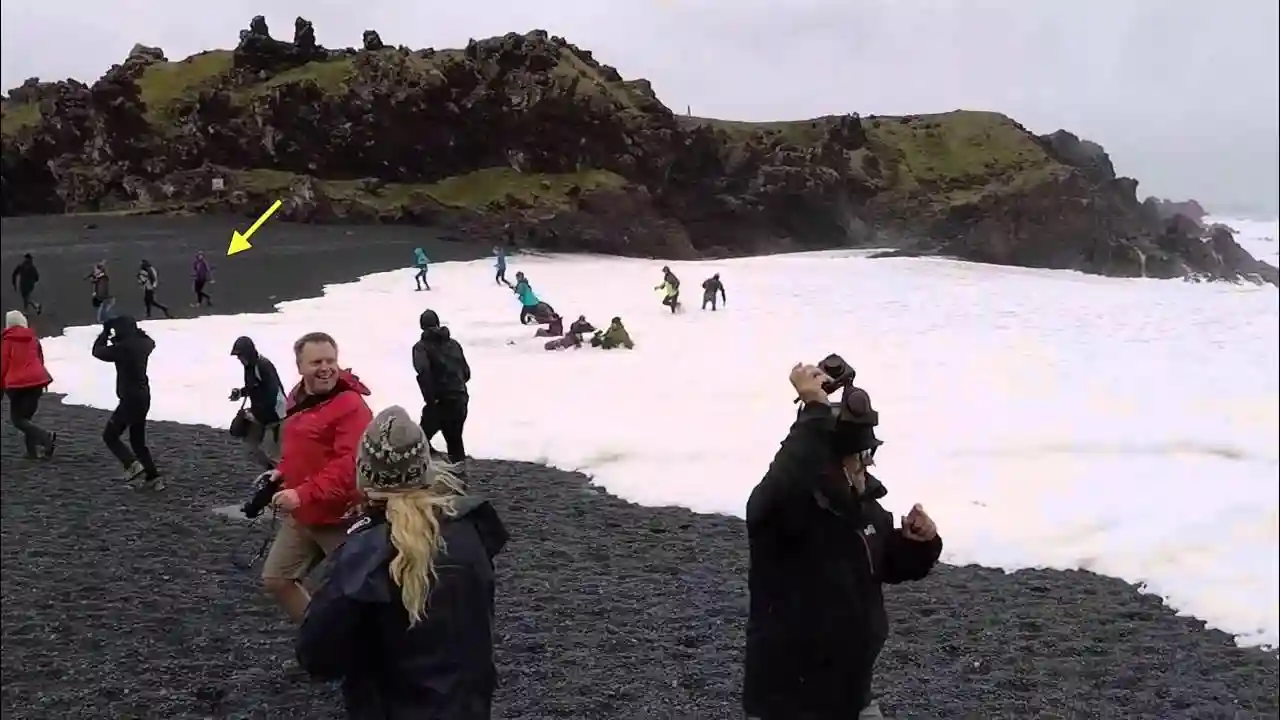
Planning a longer Iceland trip? Smart. Here’s how Snaefellsnes fits in:
- Golden Circle or Snaefellsnes first?
Doesn’t really matter. Golden Circle is closer to Reykjavik, but Snaefellsnes feels more off-the-beaten-path. If you want a quieter start, maybe hit the peninsula first. - 10-day Ring Road itinerary?
Absolutely include Snaefellsnes. It’s a detour from the main loop, but worth it. Just factor in an extra day or two. - Westfjords or Snaefellsnes?
Tough call. Westfjords are even more remote, but if you don’t have time for both, Snaefellsnes gives you a sample of everything Iceland offers — in a smaller, more digestible loop.
Final Thoughts
So, is the Snaefellsnes Peninsula worth it for first-time visitors? Honestly… yes. Maybe even more than the more famous routes. It’s compact, but packed with every kind of landscape Iceland is known for. Volcanic craters. Black beaches. Basalt cliffs. Fishing villages that feel like they’ve been painted into place. It’s dramatic but not crowded. Quiet but full of stories.
Give it time. Give it weather wiggle room. Let it surprise you.
And when you get back, you’ll probably do that thing where you try to explain how beautiful it was… but the words don’t quite work. That’s okay. It’s a place that lives better in memory than in description.
Frequently Asked Questions (FAQs)
1. Is Snaefellsnes worth visiting if I’ve already seen the Golden Circle?
Absolutely. If the Golden Circle was your appetizer, Snaefellsnes is the main course with better views and fewer buses. It’s wilder, more varied, and has that untouched feel in many places. You’ll see beaches, lava fields, dramatic cliffs, and cute coastal villages — all in one relatively compact area.
2. Can I visit Snaefellsnes in winter?
Yep, but it depends on the weather. Winter adds a beautiful, moody vibe — snow-covered mountains, icy beaches, fewer tourists. But storms, road closures, and short daylight hours can be a challenge. If you’re not used to winter driving, consider going with a guided tour or waiting until spring.
3. Do I need a 4×4 vehicle to explore the peninsula?
For most of the year, no. A regular 2WD car will get you around all the main sites via paved roads. But if you’re visiting in winter, or plan to explore gravel routes deep into the national park, a 4×4 gives you more confidence and flexibility. Just check road.is before heading out.
4. Are the roads easy to drive?
They’re manageable, but don’t expect American-style highways. Most roads are narrow, two-lane, and wind through rural landscapes. Slow down, watch out for sheep (seriously), and pull over safely for photos. Also, the weather can flip fast — fog, wind, or rain can appear out of nowhere.
5. What wildlife can I expect to see?
Seals at Ytri Tunga, seabirds along the cliffs, maybe some Arctic foxes if you’re lucky. In summer, puffins can be spotted in certain areas. Whales and orcas are also seen off the coast, especially around Olafsvík on sea tours. And of course — Icelandic horses are basically everywhere.
6. Is the area safe for solo travelers?
Yes, Iceland in general is one of the safest countries in the world. Snaefellsnes is no different. Locals are kind, crime is virtually nonexistent, and if you have an offline map and check the weather, you’ll be fine. Just don’t hike or drive into remote areas without telling someone.
7. What’s the food scene like — will I find anything besides fish?
You’ll find lamb, soups, hearty stews, baked goods, and surprisingly good pizza in a few towns. Fish is still king, but vegetarian options are increasingly common. Oh, and don’t miss Icelandic yogurt (skyr) or the fish soup — it’s basically a rite of passage.
8. Is English widely spoken?
Totally. Everyone in hospitality, tourism, and most towns speaks fluent English. You’ll see signs in Icelandic, but menus, directions, and info are often translated. Still, it’s polite (and fun) to learn a few basics like takk (thanks) and bless (bye).
9. Can I camp on the peninsula?
Yes — and the campsites here are often in stunning locations. Just note that wild camping rules have changed. You can’t just pull over anywhere and set up a tent. Use official campgrounds or check with locals if unsure. Summer is the best season for this.
10. Is two days enough to explore it all?
Two days is the sweet spot. One day is doable for highlights, but you’ll be rushing. Three days gives you more breathing room — time to linger, hike, enjoy long dinners, and maybe catch a northern lights show in winter. It really depends on your pace.

